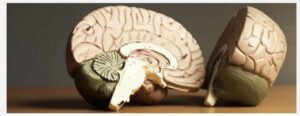Prion disease is a dangerous disease – yet rare. Prions do not have any genetic material; they are just disease causing proteins.


Disease and life go together; hence it is vital for each person to protect his or her well-being from both communicable and non-communicable diseases. The common man perceives infectious diseases are caused mainly by bacteria, virus or fungi. The sources of these disease causing microbes in humans is either through contaminated food, water or needles (surgical equipment and accessories); and also air-borne infections (aerosol infections like Covid-19).
The skin becomes vulnerable to infections when there is weak immunity, for instance in diabetic cases, incidence of fungal infections of skin are higher. Thus, to safeguard from infectious and non-infectious disease, it is advisable that commonsensical practices such as eating right food (diet), doing exercise, washing hands with soap and water, wearing mask, and other hygiene practices are adhered to.
Prions that cause disease
The simplest living things that can cause infectious disease are viruses: they are essentially a protein plus fat coating that contains genetic material: either RNA or DNA. These viruses lodge onto specific receptors on outer surface of cell membrane (for example, ACE2 receptor of lungs with which the Covid-19 disease causing virus SARS-CoV-2 binds) and then enters host cell. For certain viruses, the outer coat does not enter the host cell; it only injects the RNA or DNA. This foreign viral genetic material has the capacity to enter nucleus of host cell, control the cellular machinery and make umpteen copies of the virus.
The net result is viral replication that leads to increase in viral load and thus starts the invasion, multiplication, colonization and destruction of local tissue. Hence, there is viral infection. If the body through specific antibody proteins and cell eating (phagocytosis) property of white blood cells destroys the virus population significantly, then the viral concentration lowers, and the patient recovers from virus infection. If the patient continues to suffer from high viral loads, the patient becomes a carrier of the infection, or suffers disease or succumbs to the viral disease eventually.
Prions do not have any genetic material; they are just disease causing proteins. The word prion is derived from ‘infectious protein particle’, the hypothesis is that these prions are proteins that cause infection (meaning invasion, accumulation and destruction of tissue). As seen above, viruses are smallest parasites causing infection and they have either DNA or RNA, however, prions are even simpler. Prions are not easily inactivated including with UV irradiation. Prions can be transmitted by contaminated surgical instruments.
The infamous widely known disease caused by prions is the ‘mad cow disease’ or BSE (bovine spongiform encephalopathy) seen mainly in cattle (eating such diseased animals caused humans to have the prion disease). Thus, prions are non-living proteins that cause prion disease.
Interestingly, CDC of USA (Centers for Disease Control and Prevention) does not call prions as proteins, but refers to prions as infectious pathogenic (disease causing) agents. CDC also states there are normal prion proteins found in the brain whose functions are unknown. The exact wordings in the relevant website are as follows: “prions are abnormal, pathogenic agents that are transmissible and are able to induce abnormal folding of specific normal cellular proteins called prion proteins that are found most abundantly in the brain. The functions of these normal prion proteins are still not completely understood. The abnormal folding of the prion proteins leads to brain damage and the characteristic signs and symptoms of the disease. Prion diseases are usually rapidly progressive and always fatal”.
Prion proteins have characteristic abnormal shape and they induce similar normal constitutional proteins in animals and humans to fold abnormally, and this abnormal folding of the normal proteins in the body results in disease. Prion diseases are mostly fatal and cause degeneration of nerves including the brain.
A prion is a type of protein that can trigger normal proteins in the brain to fold abnormally. The prion-like proteins on which a prion attacks is found in certain cell membranes. The abnormally folded prion protein attacks these normal cell membrane proteins, causes abnormal changes in them and this abnormal folding is also transmitted as a chain reaction to similar cell membrane proteins, hence the damage is progressive.
So all said and done, prions are non-living abnormally folded proteins that attack similar normal proteins in cell membrane, and cause a chain reaction of abnormal folding of normal vulnerable cell membrane proteins, and this results in various prion diseases.
The human prion diseases are:
- Creutzfeldt – Jakob Disease (CJD): is a degenerative nerve disease that is fatal, death occurs in about a year, it is also called classic CJD with dementia or forgetfulness as the main symptom.
- Variant Creutzfeldt – Jakob Disease (vCJD): or mad cow disease is a brain disease caused by prions, seen in cattle mainly, it also affects humans. Symptoms include abnormal behaviour, problem walking and weight loss. This prion disease is incurable. Mad cow disease, a prion disease, infected humans through consumption of brain and spinal cord tissue of infected cattle as food.
- Gerstmann-Straussler-Scheinker Syndrome (GSS): rare and inherited fatal degenerative disease of nerves and brain. Again there is adult onset dementia or forgetfulness.
- Fatal Familial Insomnia: This is a rare genetic disease with these symptoms: trouble sleeping, speech problems, co-ordination issues and forgetfulness.
- Kuru: This is also a transmissible brain disease.
Prion disease is a dangerous disease – yet rare. Prions are not easy to catch and they cannot infect easily. Organ donation is not allowed by prion disease sufferers; there are times when it takes up to five years for full symptoms to manifest. Precautions include proper sterilization of medical equipment. Infected scalpels are known to infect other brains during surgery even years after the instrument gets contaminated, prions are not easily destroyed. Prions are also transmitted when infected tissue is consumed as food as in the case of mad cow disease.
Prions are created through genetic mechanism. Synthetic prions (disease causing proteins with abnormal folding) have been created through recombinant techniques. Prions are also created through sporadic genetic changes. Prion disease is confirmed only through brain biopsy and brain examination after death of patient as prion diseases are essentially neurodegenerative disease and often confused with Parkinsonism or Alzheimer’s disease. Self-care hygiene, right food and other precautions help avoid contamination and infection by prions.


Sunil S Chiplunkar
VP – Business Development, Group Pharmaceuticals, Bangalore
E mail: 1969sunilchiplunkar@gmail.com
Mob:63645 78669











